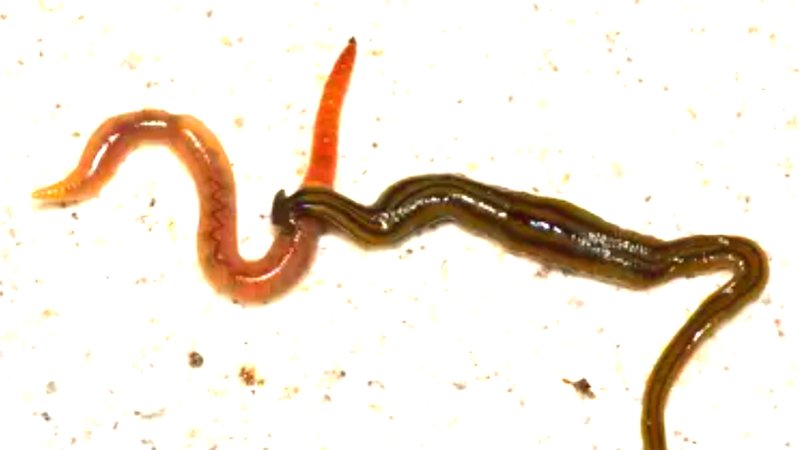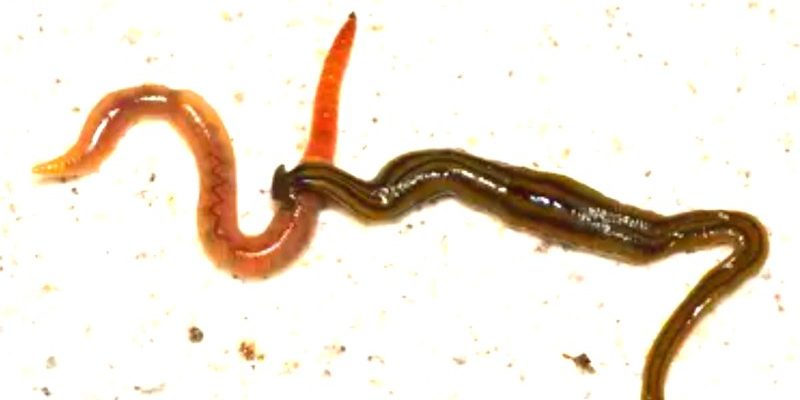
Think of hammerhead worms as the unusual guests at a dinner party. They come with a lot of attention but also a hint of unease. So, how do these slimy critters fit into the big picture of your backyard ecosystem? Are they simply a harmless oddity, or do they carry a hidden sting that could affect pets or local wildlife? Here’s what you should know about their potential toxicity and ecological impact.
What Exactly Are Hammerhead Worms?
Hammerhead worms, or Bipalium species, are part of a group known as flatworms. They are typically found in damp, tropical environments, often seeking refuge under leaves or rocks. Their unique “hammered” heads are not just for looks; they help them sense their surroundings better. Some species can grow quite large—up to 12 inches long!
These worms are primarily carnivorous, preying on small invertebrates, including earthworms. While they play a role in the ecosystem by helping control other worm populations, the existence of these creatures can sometimes lead to concerns among pet owners and wildlife enthusiasts alike.
Despite their somewhat menacing appearance, hammerhead worms are not your typical garden pests. They are non-native to many regions, including the United States, where they can become invasive. This leads to the question: how dangerous are they to pets and other wildlife?
Are Hammerhead Worms Poisonous?
Here’s the thing: hammerhead worms are not technically poisonous in the way that some creatures are. They don’t have venom that can harm pets or humans when touched. However, they do produce a type of slime that contains toxins. This slime acts as a defense mechanism, discouraging predators from munching on them.
What this means for pets is that while the worms won’t bite or sting, ingesting them could lead to some digestive upset. If a curious dog or cat takes a nibble, they might experience symptoms such as vomiting or diarrhea. This doesn’t mean you need to panic; just keep an eye on any pets that may have sampled the worm.
If you notice any unusual behavior, it’s always wise to consult a veterinarian. Pets tend to be curious, and sometimes that curiosity can lead to unexpected encounters with wildlife.
Effects of Hammerhead Worms on Pets
While pets might not face deadly consequences from encountering hammerhead worms, there are a few things to consider. Curiosity is a cat and dog’s middle name, and that can get them into trouble. If your pet finds a hammerhead worm in the yard, they might want to inspect it closely—often with their mouths!
Some potential effects on pets include:
- Gastrointestinal Upset: If ingested, pets might vomit or have diarrhea. These symptoms are typically mild but can be alarming.
- Slime Irritation: Direct contact with the worm’s slime might cause mild skin irritation. If you notice your pet pawing at their mouth or licking excessively, it could be worth a check.
- Unusual Behavior: If your pet seems lethargic or unwell after contact with a hammerhead worm, it’s advisable to monitor them closely.
Ultimately, it’s a good practice to keep a watchful eye when your pets are outdoors.
Do Hammerhead Worms Affect Wildlife?
Hammerhead worms aren’t just lurking around to bother our pets—they also have an impact on local wildlife. Their carnivorous nature means they prey on other worms and invertebrates, which can alter the balance of the ecosystem. Predators that rely on these invertebrates for food might find their own food sources dwindling, creating a ripple effect.
Here’s how hammerhead worms can influence wildlife:
- Disruption of Local Food Chains: By consuming native earthworms and other small creatures, hammerhead worms can disrupt the food chain. This can lead to decreased populations of these essential organisms.
- Competition with Native Species: Hammerhead worms often compete with local species for food and resources. Their invasive nature can result in the decline of native worm populations.
- Effects on Soil Health: Earthworms play a crucial role in soil aeration and nutrient cycling. A decrease in their population due to predation by hammerhead worms can affect soil health and plant growth.
This can be particularly concerning for gardeners and those interested in maintaining a balanced ecosystem.
How to Handle Hammerhead Worm Sightings
If you do encounter a hammerhead worm, it’s best to handle the situation carefully, especially if you have pets. Here are some steps you can take:
1. Avoid Direct Contact: If you see a hammerhead worm, try to keep pets away from it. While they aren’t highly toxic, it’s better to be safe than sorry.
2. Wear Gloves: If you need to move the worm, consider wearing gloves. This can protect you from its slime and help prevent any potential irritation.
3. Relocate Them: If possible, gently place the worm in a suitable damp area far from your garden or home. They thrive in moist environments, so relocating them can help keep your space pet-friendly.
4. Keep Your Yard Clean: Regularly cleaning up debris, such as leaves and damp organic matter, can deter these worms from taking up residence in your yard.
So, are hammerhead worms poisonous to pets or wildlife? The short answer: not really, but caution is wise. While they don’t pose a severe threat, their presence can lead to digestive issues in pets if ingested, and they can disrupt local ecosystems. If you encounter one, just remember to keep your pets safe and maintain a healthy curiosity about these fascinating creatures.
Joining the natural world means knowing how to coexist with its many residents—some more bizarre than others. Understanding the role of hammerhead worms can help you navigate your garden safely, ensuring both you and your furry friends can enjoy the outdoors without worry.

